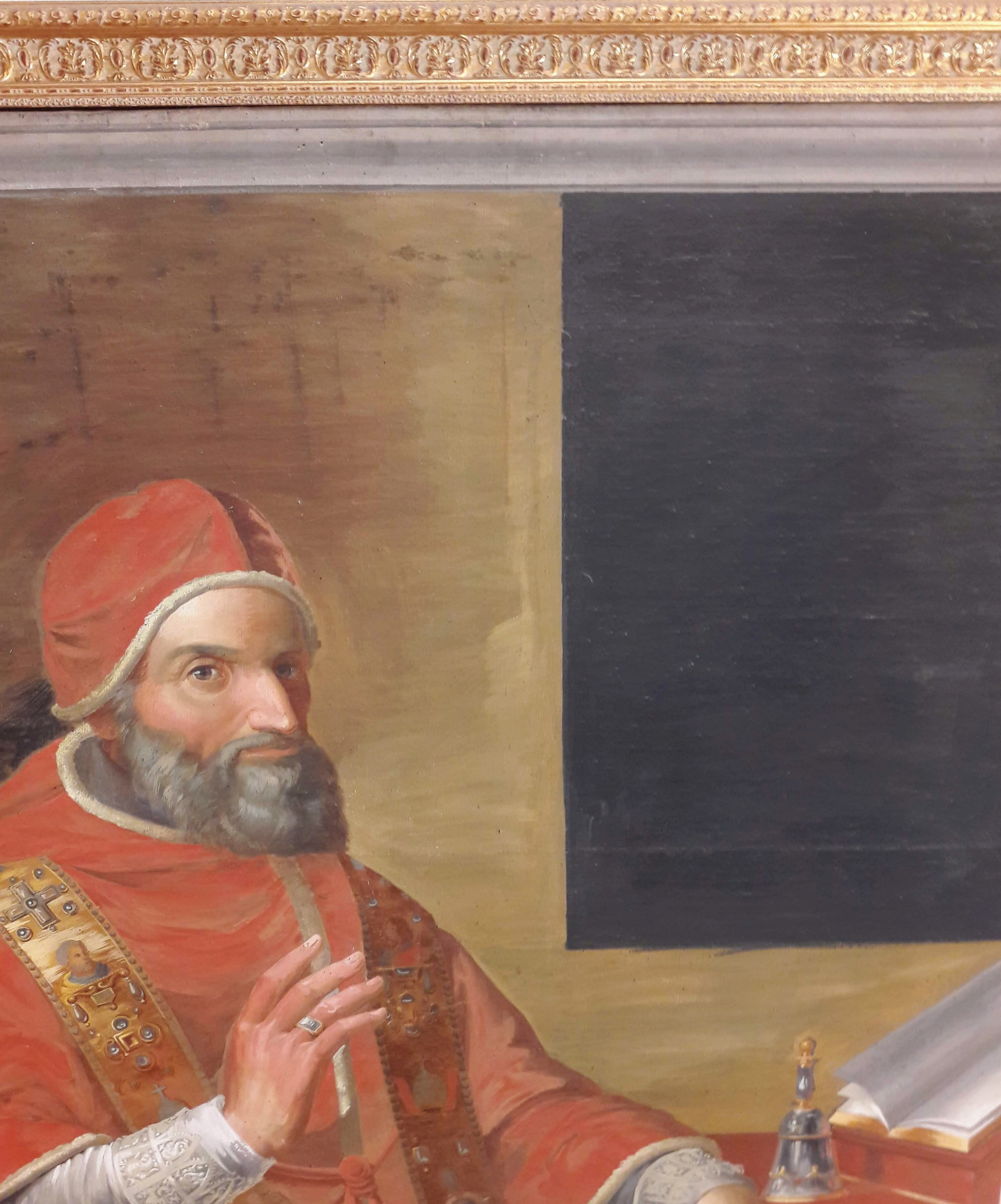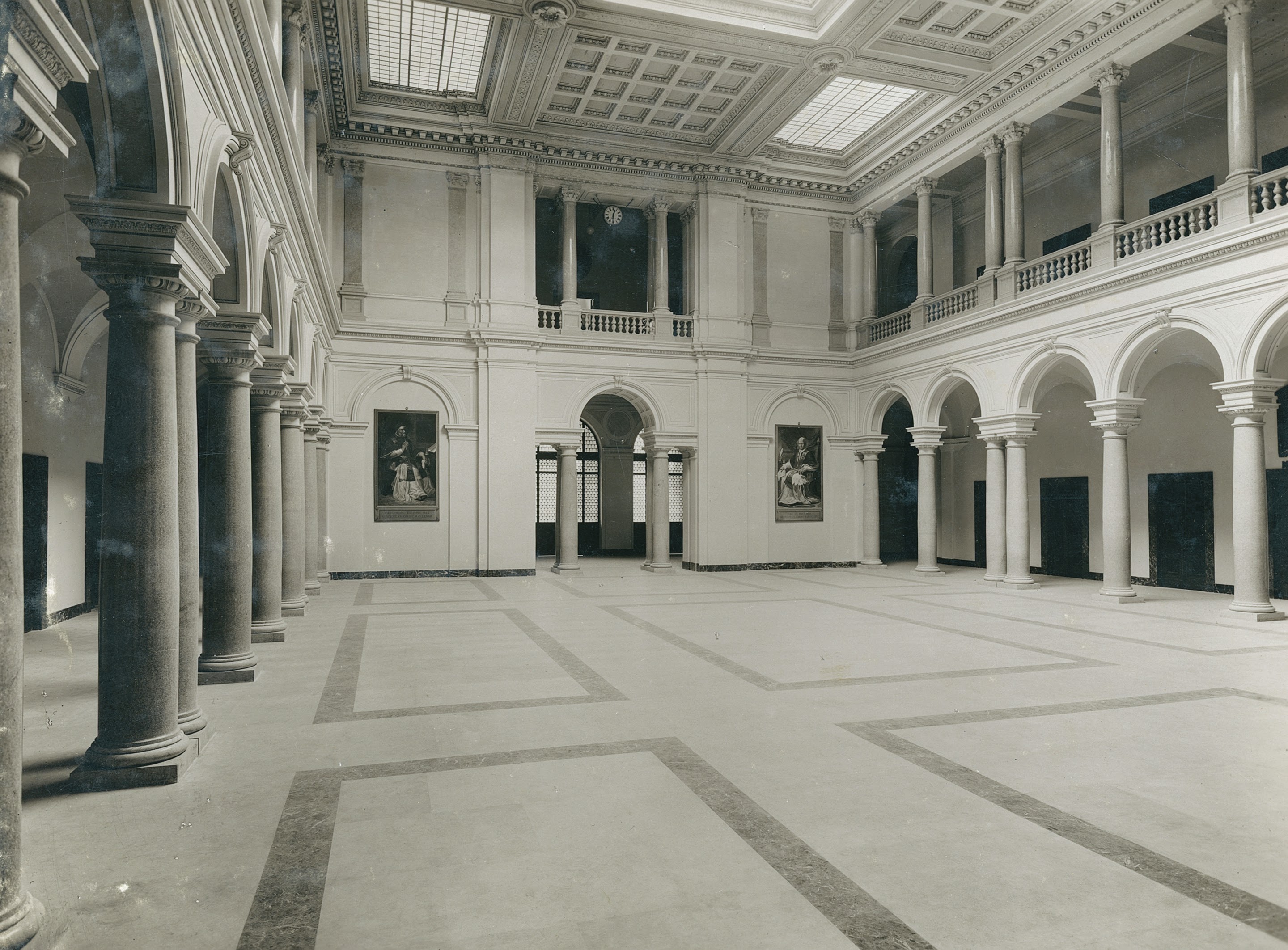Fervet opus
The Barluzzi collection maintains much of the documentation concerning the construction of the Gregorian University: from the first 1924 project, approved by Pius XI and never put into effect in its entirety, to the further changes that constituted the present building, designed by engineer Giulio Barluzzi (1878-1953). Pictures of the different construction phases, material lists and costs, prospects, plans and sections illustrate the criteria, choices and afterthoughts of men. In 2015, the collection has been organized and inventoried thanks to the generous collaboration of Antonio Barluzzi, nephew of Julius.
Statics and decision-making movements
The apparent statics of the building was sorely tested by the growing decision-making pressure those walls have to bear. From the 1970s onwards, a number of decisions started to be felt. Downsizing of certain locations to get new spaces for offices and services, renovations of classrooms to promote the acceptance of small groups, more suited to seminar activities. In this redistribution and reallocation of space, there has been the inauguration of the new reading room of the library, that corresponds to former Audience Hall V, with a capacity of 800 seats, corresponding to the Assembly Hall, which was originally intended for teaching theology. In 1983, the student chapel was changed by reducing it to one-third of its length and halving its height, in order to create the bookshop.
It is not easy to find within archival records a comprehensive description of most of these changes. It may not always be functional for the organization keeping a detailed account of why the same has come to take certain decisions. A greater amount of information would have led to more complex and time-consuming selective processes, and time is always short when a decision must be taken. This dynamic could mean an increase of the related critical issues for people who cares about the future of the archives, their usefulness and the significance of their consultation. The meaning of archive, which refers etymologically to origins (ἀρχή), is also close to the term rulers (ἄρχοντες), that use it according to the need of their government.
All the things that gravitate around the organization (buildings, things, men…) acquire a sense in so far as there are decisions. The organization arises and recreates itself through the decisions, and even the intentions and efforts to escape the decision-making power do not escape this rule.
When the alternatives increase within the decision horizon, the organization is faced with the necessity to make more deliberations, in order to try to absorb the uncertainty, thus converting it into risk. The risk, which is, for its part, essentially anthropic, contrary to the fate or fortune, will require new decisions to compute or reduce it.
The past and the black window
In our modernity, the future appears as a grim-visaged risk. If once danger was something to face, from the present to the future, the risk would imply some kind of reverse path causing an acceleration of time. But the decision must also come to terms with the past: it cannot accept its definiteness. The decisions taken in the present must select some elements from the past to build the history which would allow the establishment of a new origin authorizing current choices. The memory is ancipital, like Janus Bifrons, it is not just recollection, but also simultaneously forgetfulness. This mnemonic selection allows to connect a concept of past with an idea of future. The narrative, which is the result of historiographical operation, must be functional in order to mitigate the expected risks in the future.
As an example, I would like to bring attention to a small detail enclosing a great significance and for which it has been possible to retrieve information due to the photographic documentation of the Barluzzi Collection (Photo 1 and 2). On the occasion of the inauguration of the new premises of the University on November 6th, 1930, two paintings, which are not extremely fine, have been placed in the lower part of the atrium (1). On the left hand side, we can see Gregory XIII, in the inaugural address called “Fundator et parens” by the Rector Fr. Giuseppe Gianfranceschi, while on the right there is Leo XII, the Pope who gave the Roman College back to the Jesuits in 1824. Subsequently, the two paintings have been relocated in the upper part of the atrium (2).
The painting of Pope Boncompagni encloses a metaphor of this paradoxical time distribution. The Pope is sitting on a throne decorated with the dragon without tail that stands in Boncompagni crest. He is dressed in white pleated silk cassock, red velvet mozzetta with an ermine band around the hem and is wearing the camauro on his head. The right hand is raised in blessing and flaunts the papal ring, the left one grasps a white handkerchief, symbol of fatigue and pain. On his table there is a bell to call servants and courtiers, while a book of immaculate whites heets is open on the lectern. Handkerchief and bell are elements already present in the famous paintings by Raphael dedicated to Julius II and Leo X.
A huge black rectangle hangs on the side of the Pope’s head. Despite its size, it is not uncommon that people passing by this painting every day didn’t see that black window. The strength of the obvious, which etymologically means “what is on the road”, prevents us from seeing and then asking. And that’s when the question becomes even more urgent. All we need is getting upstairs, to the first floor, to closely observe the above mentioned rectangle, which, inter alia, has been realized with a hurried and inaccurate stroke.
The portrait was inspired by a painting of the seventeenth century located in the Villino Boncompagni Ludovisi in Rome. In this case, Pope Gregory XIII appears seated on his throne and is located in the library of the Roman College. Next to his head, an open window lets you see the close-up of the large courtyard of the College, where some Jesuits promenade and overlook. The book open on his desk in this case, not only is not white, but we can even recognize the Treaty on the Gregorian calendar by the Jesuit Christopher Clavius (1603).

Gregory XIII. Atrium of the Pontifical Gregorian University 
Gregory XIII, detail. Villino Boncompagni Ludovisi, Rome 
Gregory XIII. Villino Boncompagni Ludovisi, Rome
We ignore why this reference to the tight continuity between the Roman College and the Gregorian University has been deleted at the time of the opening of the latter. A reconsideration of such importance could be decided only by the then Superior General of the order, Fr. Wlodimir Ledóchowski (1). The fact that Pope Gregory appeared, in 1930, sitting in his library at the Roman College, when the whole structure had become a classical high school and the National Library of Rome’s central branch, perhaps was not convenient, in the context of the complex and close relations between fascism and Catholic Church. The continuity that today we can declare without difficulty between the Roman College and Pontifical Gregorian University, back then would have been considered as politically inconvenient. Either way, a black window has forever overshadowed this motivation. Precisely the fact of not knowing that will create the space to trigger new decisions.
1. For that insight I really thank Fr. Marek Inglot SJ, with whom I have been discussing this and other assumptions.
[Translation from Italian Vanessa Terzo]


